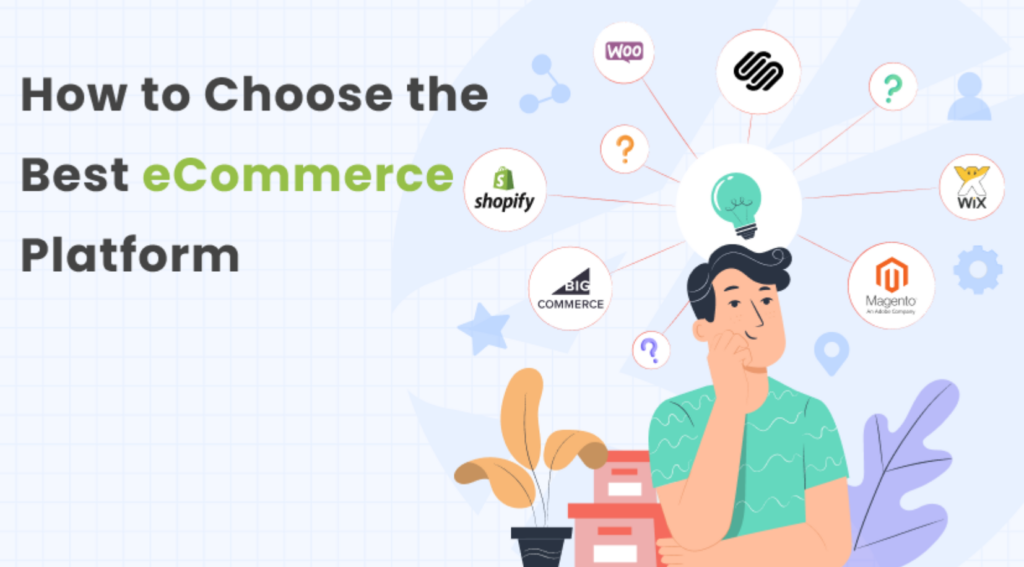
When building an online store, businesses often choose between standalone e-commerce platforms like Shopify or Magento, and integrating e-commerce into an existing WordPress website with a plugin like WooCommerce. Below is a simple comparison of both approaches.
1. Platform Overview
- Separate-Site E-Commerce (Shopify, Magento):
- Shopify and Magento are fully dedicated e-commerce platforms designed to manage online stores.
- These platforms function independently, separate from any other website, offering a complete package for managing products, payments, and sales.
- Shopify is easy to use, while Magento is more technical but highly customizable.
- WordPress-Embedded E-Commerce (WooCommerce):
- WooCommerce turns a WordPress website into a complete online store.
- Instead of being a separate website, the store is embedded within an existing WordPress site, giving you a unified platform for both content and e-commerce.
- Ideal for businesses that already use WordPress for their website or blog.
2. Ease of Setup and Use
- Shopify:
- Very easy: Offers a simple setup with drag-and-drop functionality. Perfect for those with little to no technical knowledge.
- Hosting, security, and payment gateways are handled by Shopify.
- Magento:
- More complex: Magento is highly customizable but requires technical expertise to set up, especially if self-hosting.
- More suited for businesses with in-house developers or technical support.
- WordPress with WooCommerce:
- Moderate difficulty: WooCommerce is relatively easy for existing WordPress users, but configuring the store can involve several steps, such as installing plugins and selecting themes.
- Users need to manage their own hosting and website security.
3. Cost
- Shopify:
- Subscription-based: Starts at $39/month, with more expensive plans offering advanced features.
- Transaction fees apply unless Shopify Payments is used.
- Includes hosting and security in the subscription.
- Magento:
- Magento Open Source is free, but you’ll need to pay for hosting and additional features.
- Magento Commerce is a premium version, with prices that scale depending on the business size.
- WooCommerce:
- The WooCommerce plugin is free, but users must pay for WordPress hosting, themes, and extra features like payment gateways.
- Flexible costs: You only pay for the features you need, making it a budget-friendly option for small businesses.
4. Customization and Flexibility
- Shopify:
- Limited customization: Users can choose from themes and apps, but deep customization options are restricted unless you hire a Shopify developer.
- Shopify has an app marketplace for added features, but many apps come with monthly fees.
- Magento:
- Highly customizable: Magento allows full control over store design and functionality. It’s suited for businesses with complex needs and in-house developers.
- Magento’s open-source nature makes it ideal for large-scale customizations.
- WooCommerce:
- Highly flexible: Since it’s built into WordPress, WooCommerce allows extensive customization through plugins and themes.
- The vast plugin ecosystem on WordPress gives you the ability to add features like SEO tools, advanced shipping options, and more.
5. Hosting and Maintenance
- Shopify:
- Fully hosted: Shopify handles all aspects of hosting, security, and maintenance, making it a hands-off solution for users.
- Shopify takes care of all updates and backups, requiring no user involvement.
- Magento:
- Self-hosted (Open Source): You must manage hosting, security, and updates yourself, or pay for managed hosting.
- Magento Commerce offers managed hosting at a higher price.
- WooCommerce:
- Self-hosted: You manage your own hosting, security, and updates for both WordPress and WooCommerce.
- While you have more control, this also requires more effort in terms of maintenance and performance optimization.
6. Scalability
- Shopify:
- Highly scalable: Shopify can handle businesses of any size, but as your store grows, costs increase.
- Limited control: While you can scale, you may hit limitations in terms of customization as your business expands.
- Magento:
- Built for large businesses: Magento is perfect for enterprise-level stores that need high levels of customization and scalability.
- It can handle high traffic and thousands of products, but requires powerful servers and technical resources.
- WooCommerce:
- Scalable with the right hosting: WooCommerce can grow alongside your business, but you’ll need a reliable hosting provider to handle larger volumes of traffic and sales.
- You have more control over how your store scales, but it can become complex to manage without proper hosting.
Conclusion:
- Shopify is ideal for businesses that want a simple, all-in-one solution without dealing with the technical aspects of running a website. It’s great for small and medium-sized businesses that prioritize ease of use and quick setup.
- Magento is best for larger businesses or enterprises needing deep customization, powerful performance, and high scalability, but it requires significant technical expertise and resources.
- WooCommerce is perfect for those already using WordPress or those looking for a highly flexible and customizable solution. It offers full control over your store but requires self-management of hosting, updates, and security.





